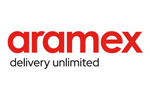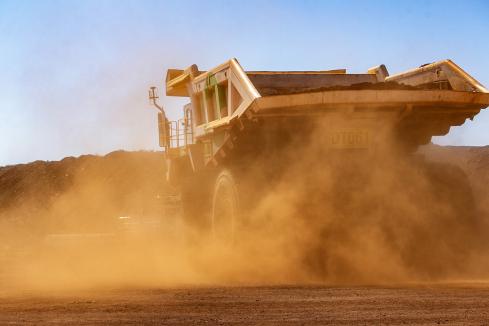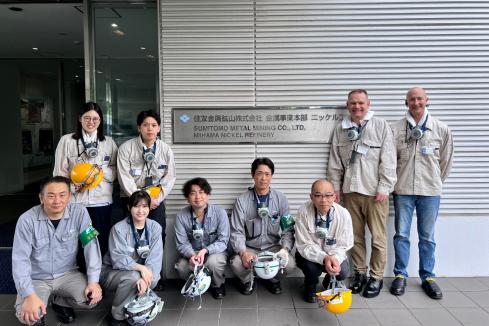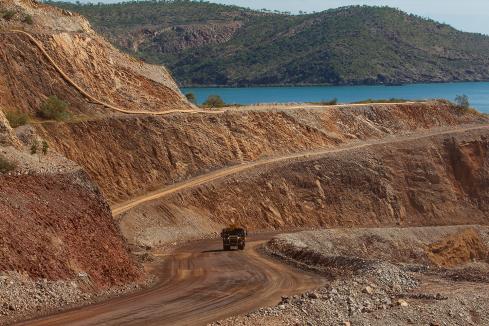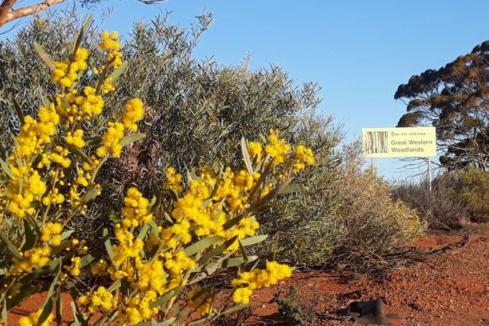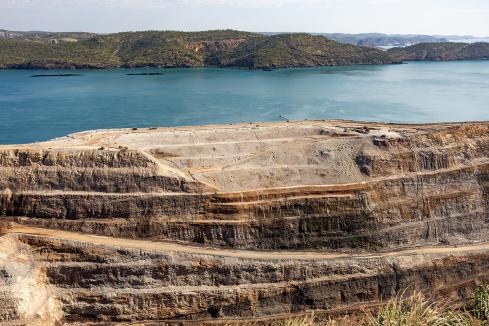
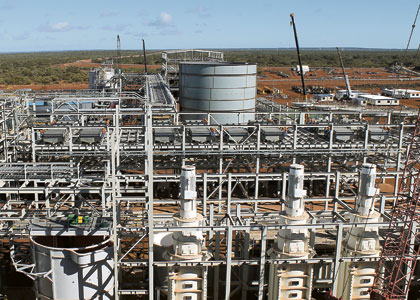
MID West iron ore projects have the potential to produce 67 million tonnes of iron ore per year, earning the state annualised royalties in the range of $42 million.
Current production is less than a fifth of that, however, and that is unlikely to change until a port development at Oakajee is commissioned to take pressure off Geraldton’s limited capacity.
Holding up progress are negotiations around Oakajee Port and Rail’s proposed $6 billion integrated infrastructure.
The state government appears to be making slow progress in negotiations between the China Investment Corporation (China’s sovereign wealth fund), and Japanese-owned Mitsubishi, which paid $325 million to take full control of the Oakajee project in February.
Crosslands Resources’ plans for its Jack Hills mine are at the mercy of the Oakajee negotiations, but the company has been working in the background to improve the project’s viability.
In what it says is also a strengthening of OPR’s business case, Crosslands has simplified its planned production flow for output of 20mtpa.
OPR chief executive John Langolant said the ‘optimised approach’ helped make the Oakajee project more viable, as Jack Hills would be a crucial customer.
The other notable Mid West player, and anticipated Oakajee customer, is Sinosteel with its Weld Range project – tipped for production of 15mtpa.
Its location, almost 400 kilometres inland from Geraldton and without established infrastructure, means Sinosteel’s progress is also dependent on an Oakajee solution.
The company is in discussions with Crosslands about infrastructure solutions between its resources and the Jack Hills mine approximately 100km north.
Also stalling production from the Mid West is the delay of Asia Iron’s Extension Hill project because of funding issues.
A political scandal involving the arrest of Chinese minority shareholder, Chongqing Chonggang Minerals Development boss Bo Xilai, has delayed previously agreed investment.
The project was understood to have had conditional $2.4 billion of Chinese debt, but that will not be available until the political issues have been resolved.
Consequently the company has been forced to delay its original target for shipping first concentrate from Geraldton in 2014, without suggesting a new date.
Meanwhile, Karara Mining, via Gindalbie chairman George Jones, has signalled plans to work with Asia Iron on a ‘plan B’ for Oakajee, if OPR’s proposal falls over.
As a result of the various hold ups, Karara Mining is largely responsible for the flow of iron coming from the Mid West.
Its $2.57 billion investment in its mine, infrastructure, and Geraldton port facilities is nearing completion, and the first train-load of hematite was transported on its new integrated mine-and-rail chain this month.
First magnetite production is forecast for the end of September.
The company – a joint venture between Gindalbie Metals and Chinese steelmaker Ansteel – is planning to ramp production up to 10mtpa by the end of 2012.
But it too is depending on an Oakajee port and associated infrastructure to make its stage three increase beyond 16mtpa viable.
Mount Gibson is the only current producer not planning for a port development at Oakajee.
The company is increasing production from its hematite resource at Extension Hill to 3mtpa, which is being exported through Geraldton port alongside material from the Tallering Peak mine.
Tallering Peak is due to reach end of life in about a year, meaning Mount Gibson’s production will be capped at 6mtpa and will not require additional port facilities.
While progress has been positive for Mount Gibson, the company mined less than hoped from Extension Hill as rail upgrades restricted the amount of material able to be transported.
Those rail restrictions are expected to ease this quarter.






